| Reviews & Columns |
|
Reviews DVD TV on DVD Blu-ray 4K UHD International DVDs In Theaters Reviews by Studio Video Games Features Collector Series DVDs Easter Egg Database Interviews DVD Talk Radio Feature Articles Columns Anime Talk DVD Savant Horror DVDs The M.O.D. Squad Art House HD Talk Silent DVD
|
DVD Talk Forum |
|
|
| Resources |
|
DVD Price Search Customer Service #'s RCE Info Links |
|
Columns
|
|
|
Yumurta (Egg)
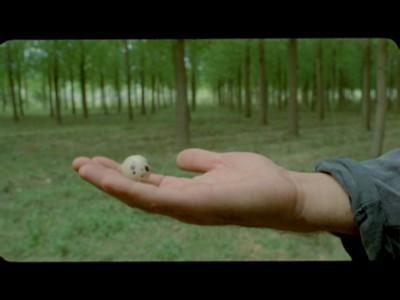
With Yumurta (Egg), the first film in his "Yusuf trilogy," Turkish filmmaker Semih Kaplanoglu lays out the divisions that will dominate the three films, which follow, in reverse chronological order, the life of a Turkish boy called Yusuf. These oppositions are city vs. country; modern vs. traditional; civilization vs. nature; and, ultimately, art vs. life. Yusuf--a rural boy from the Anatolia region of Turkey who will eventually move to Istanbul and away from his more traditional, rural Muslim family and places of origin to pursue a career as an acclaimed, semi-successful poet--leads a conflicted existence in the limbo where all those clashing ideas and values intersect, and he is perpetually obliged to attempt what may be an impossible reconciliation between them (unless one can go back to before the splits occurred, which is what the trilogy ultimately does).
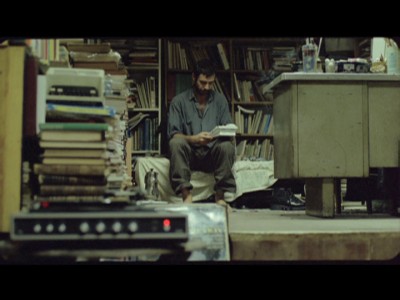
In Yumurta, then, we see Yusuf (played, here, by Nejat Isler) at as late a period in his life as we will ever see him; he appears to be in his mid-30s, living a comfortable-enough struggling artist's existence in Istanbul as he faces encroaching disillusionment with his poetry and makes a living running a used bookstore. As the film opens, he receives word by telephone that his mother has died, and therefore he must return to Tire, the village he came from, to attend her funeral and take care of some of the usual post-death arrangements. We then, over the opening credits, hear the sound of him packing up and leaving his "new" world for the "old" one where the rest of the film will play out.
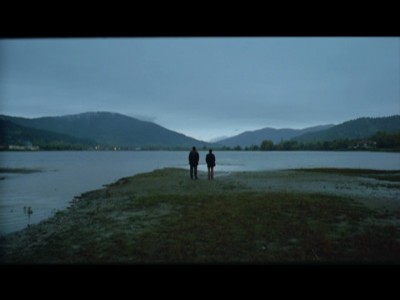
Once Yusuf arrives in Tire, a distant relation, Ayla (Saadet Aksoy)--who has been caring for his mother for years after Yusuf, who apparently never visits Tire, has become distanced from his family--informs him that his mother's dying wish was that he sacrifice a ram in a traditional Muslim ritual. There is a tremendous amount of tension between this wish, which represents, both physically and spiritually, where Yusuf came from, and his present-day, cosmopolitan but alienated and community-less self, to whom such an act seems tiresome and pointless at best, barbaric at worst. Yusuf begins to have curious, sometimes ominous dreams (in one, he smashes an egg to the ground, bringing on some nameless catastrophe); he is persistently delayed in his departure from Tire, which was to have been immediate, and he seems somehow incapable of leaving (in the same way that the dinner guests in The Exterminating Angel can't leave); he awkwardly visits his friends from before he left Tire, with whom he now has little in common; and he stumbles across an ex-girlfriend who has also returned to Tire, following her own failed pursuit of a "better" life in the city. Finally, reluctantly, Yusuf gives in to Ayla's gentle persuasion and accepts his mother's wish, and they take the journey together to the designated place where the animal-sacrifice rituals are performed. Whether it is the blood of the sacrificial ram or the newfound sense of family and home he begins to feel with Ayla is the true representation of what Yusuf fled when he left Tire, his ambivalence toward his past and the dichotomies of his life is deepened by the multifaceted experience that has led him to reconnect, however tentatively and obligatorily, with his roots.
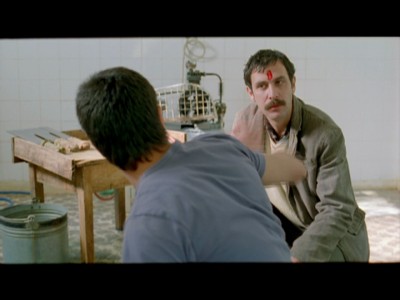
Kaplanoglu and cinematographer Ozgur Eken (with the remarkable aid of art director Naz Erayda) have a way of telling their seemingly simple, direct story that reveals its nuances and complexities visually, through a slowed-down, acutely and patiently observant sense of passing time, nature, light, and the particularities of interior settings that recalls the aesthetics of Tarkovsky and Theo Angelopolous (Yusuf also obviously shares a tripartite life story with Satyajit Ray's Apu). Like those masters, Kaplanoglu demonstrates that alienation is not an exclusively Western/post-Judeo-Christian condition, but one that affects anyone, from anywhere or any culture, who feels removed, by choice or by force (or the combination of those that more commonly leads us to break off from home and family), from a sense of integration, connection, and community. The acknowledgment for the potential of healing these splits varies from culture to culture, and (without meaning to exoticize or patronize in any way the Turkish Muslim tradition Kaplanoglu is dealing with) what is fascinating about Yumurta is its still very vital, intense concern over the matter, its troubled faith that paths that have painfully diverged from home, family, and tradition can somehow reconverge, or at least run closely parallel enough to be visible one to the other. In a graceful microcosmic expression of that faith, as if to compensate or reassure Yusuf after his nightmarish egg-smashing vision from the beginning of the film, Ayla quietly, unemphatically presents him with a freshly laid, whole, perfect one before as it comes to a close.
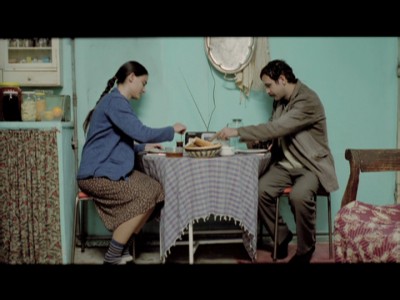
THE DVD:
Yumurta is the only film of the trilogy to be presented in a non-anamorphic transfer by Olive Films, its American distributor; and its visual quality is probably the most inferior of the group, with some slight blurriness to the picture throughout. Still, cinematographer Ozgur Eken's excellent use of natural light and art director Naz Erayda's carefully chosen, noticeable but not too obtrusive color scheme come through suffiicently clear and brilliant, and the transfer is overall more than adequate, though these images are so nicely done and eye-catching that one can't help regretting their relative smallness due to not being anamorphic.
Sound:There is no non-diegetic music whatsoever in Yumurta, but its soundtrack is alive with consistent, important natural/ambient sound, which, along with the dialogue, is delivered with perfect clarity by the disc's Dolby Digital 2.0 stereo soundtrack.
Extras:None.
FINAL THOUGHTS:The starting point of a trilogy in which the protagonist's life will be told reverse-chronologically, Semih Kaplanoglu's Yumurta is a strong, intriguing opening chapter that finds Yusuf in his most extreme state of alienation from the family, town, and traditions of his earlier life. As such, the film represents the first stage, the first steps toward a reconciliation between the splits in Yusuf's life that can only occur in reverse, as his future can only bring a further widening of the chasms. If the trilogy as a whole represents that "journey back" in time, this film stands on its own in representing a "journey back" in space, from the big, modern city to Yusuf's place of origin. It is a journey that, captured with compassion, humaneness, and melancholy by Kaplanoglu and company's frequently ravishing, deliberately paced view of it, is a thing of compassionate, melancholy beauty. Recommended.
|
| Popular Reviews |
| Sponsored Links |
|
|
| Sponsored Links |
|
|
| Release List | Reviews | Shop | Newsletter | Forum | DVD Giveaways | Blu-Ray | Advertise |
|
Copyright 2024 DVDTalk.com All Rights Reserved. Legal Info, Privacy Policy, Terms of Use,
Manage Preferences,
Your Privacy Choices | |||||||














